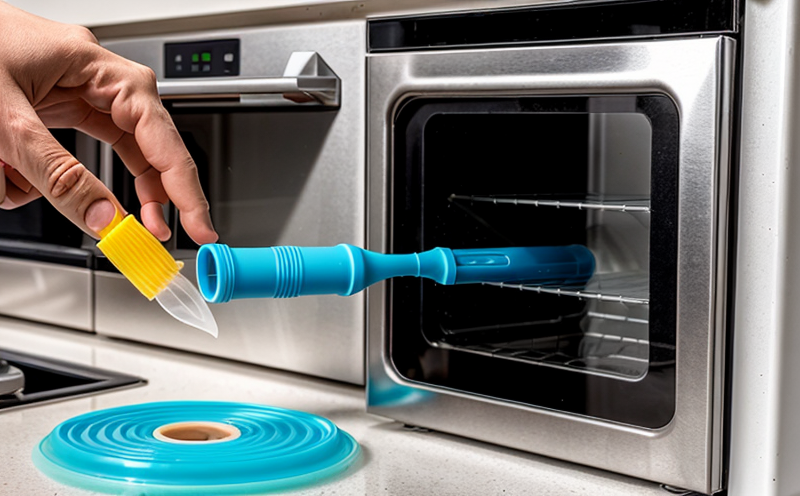ISO 1628 Viscosity Number Testing of Household Plastics
The ISO 1628 Viscosity Number test is a critical procedure used to measure the viscosity number of household plastics, which indicates how viscous or fluid-like they are at a specific temperature. This test is essential for quality managers and R&D engineers in ensuring that products meet the required specifications set by international standards.
Viscosity plays a crucial role in determining the flow behavior, processability, and final performance of household plastics such as polyethylene (PE), polypropylene (PP), polystyrene (PS), and others. Understanding viscosity is vital for optimizing manufacturing processes, predicting product performance under various conditions, and ensuring safety.
The test involves measuring the time it takes for a specified amount of liquid to flow through a calibrated capillary tube at a given temperature. The viscosity number is then calculated using this time value according to the ISO 1628 standard. This information helps manufacturers adjust formulations, improve process efficiency, and meet stringent regulatory requirements.
In household applications, accurate viscosity measurements are particularly important for products like packaging materials, toys, and appliances where consistency in performance and safety is paramount. For instance, in the case of children's toys made from plastics, understanding their flow properties can help prevent accidents due to brittle or overly flexible components.
The ISO 1628 test offers several advantages over other methods for assessing viscosity. It provides a direct measurement that correlates well with real-world performance and is easy to standardize across different laboratories. However, it does have limitations; the results can vary depending on temperature control during testing, sample preparation, and calibration of equipment.
For quality assurance purposes, this test ensures that household plastics meet specified viscosity requirements before being used in production or sold to consumers. It helps prevent substandard materials from entering the market, which could lead to product failures or safety issues.
In summary, ISO 1628 Viscosity Number Testing of Household Plastics is a vital tool for ensuring consistent quality and compliance with industry standards. By providing precise data on viscosity characteristics, this test supports informed decision-making throughout the development and production processes of household plastics.
Industry Applications
- Packaging Industry: Ensures proper sealing properties for packaging films and containers.
- Toys and Games: Guarantees safe handling by children without causing injury due to material brittleness or excessive flexibility.
- Household Appliances: Aids in designing efficient cooling systems based on the thermal conductivity of plastic components.
- Petrochemical Sector: Supports refining processes involving polymer blends with specific viscosity characteristics.
The data obtained from ISO 1628 Viscosity Number Testing can be instrumental in optimizing various aspects of household plastics manufacturing. For example, in the toy industry, understanding the exact viscosity number allows manufacturers to select materials that meet safety standards while maintaining durability and flexibility required for safe play.
Why Choose This Test
The ISO 1628 Viscosity Number Testing of Household Plastics is chosen by many because it offers a reliable method to assess the flow properties of household plastics. This test provides valuable insights into how these materials behave under different conditions, which can significantly impact their performance and safety.
One key advantage of this test is its ability to detect even minor changes in viscosity that might otherwise go unnoticed. These small variations could indicate issues with raw material quality or processing conditions. Early identification of such problems allows for corrective actions to be taken promptly, preventing costly rework or scrap.
Another reason why this test is preferred is its simplicity and repeatability. The procedure involves straightforward steps that can be easily followed by trained personnel in any laboratory setting. This consistency ensures accurate results every time, making it a trustworthy choice for quality assurance departments.
The ISO 1628 Viscosity Number Testing also plays an important role in meeting regulatory requirements set forth by organizations like the American Society for Testing and Materials (ASTM) or European Norms (EN). Compliance with these standards not only enhances credibility but also protects brands from potential legal challenges associated with non-conformity.
Lastly, this test supports sustainable practices by helping manufacturers choose eco-friendly alternatives that offer similar viscosity characteristics. As environmental concerns continue to grow, being able to compare new materials based on their flow properties becomes increasingly relevant.
Customer Impact and Satisfaction
- Enhanced Product Safety: By ensuring that household plastics meet specific viscosity requirements, this test helps protect consumers from potential hazards associated with unsafe products.
- Better Quality Assurance: Accurate measurements contribute to higher product quality by identifying any deviations early on in the production process.
- Informed Decision-Making: Manufacturers can make more informed decisions about raw material selection and processing parameters, leading to improved overall performance of their products.
- Regulatory Compliance: Meeting stringent regulatory requirements builds trust with customers who expect compliant products from reputable brands.
The ISO 1628 Viscosity Number Testing not only benefits manufacturers but also enhances customer satisfaction. Consumers appreciate safer, higher quality household plastics that perform consistently across different environments and use cases. This aligns well with modern trends towards sustainability and responsible consumption.





